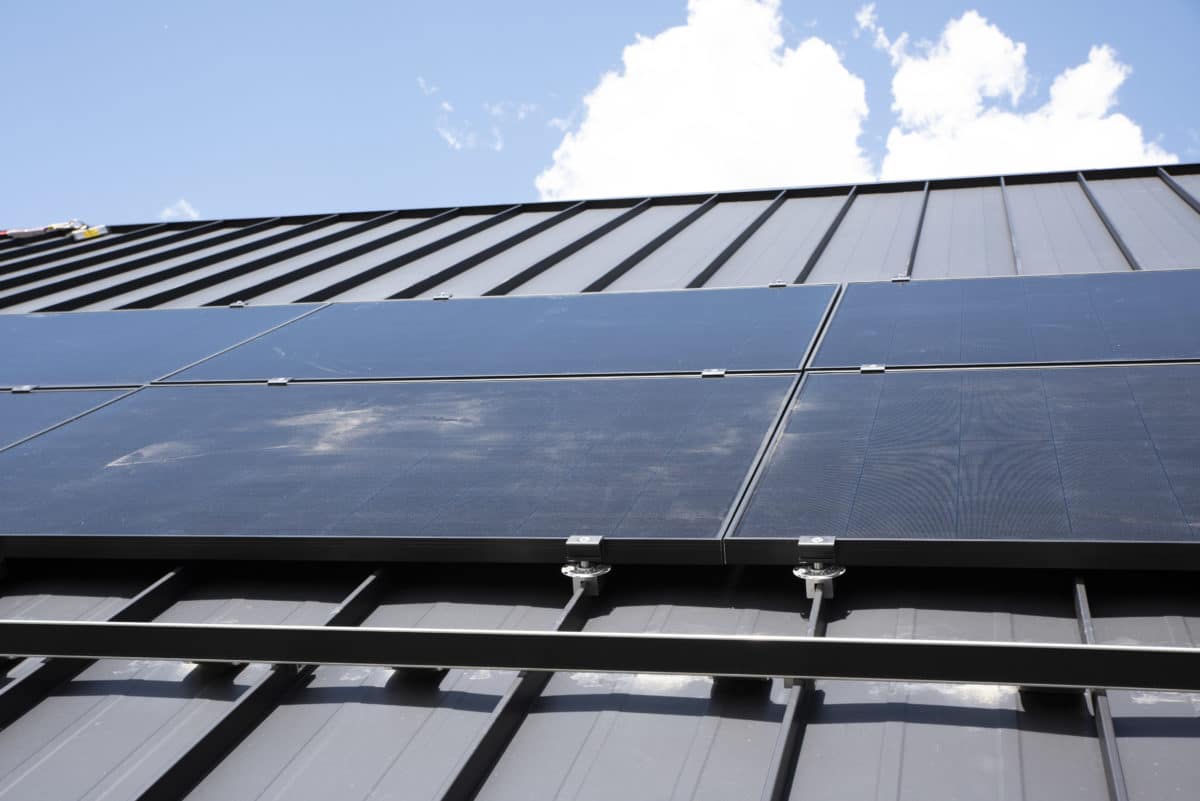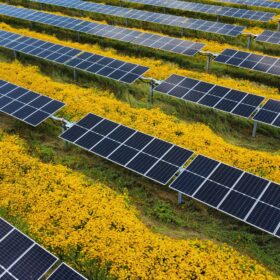S-5!, a manufacturer of metal roof attachment solutions with non-penetrative solutions for attaching solar systems to metal roofs, has released a three-part series of white papers examining the relationship between solar and metal roofs with the Metal Construction Association (MCA).
In the first entry of this series, the two explored the advantages metal roofs inherently have in housing solar systems, from the perspective of asset lifespans and overall system lifetime costs, while the second entry focused on common types of mounting systems for metal roofs, and the associated risks, pros, and cons of each.
In the final entry S-5! and MCA bring together the previous conversations to take a comprehensive look at the critical technical factors for solar PV systems specific to mounting on metal roofs. authors from the two organizations illustrates how long-term performance of roof-mounted solar PV systems can only be achieved through careful planning, design, procurement, installation and quality control.
Of course, as was outlined in the first entry, the first consideration for installing a pv system on a metal roof should be to verify that the existing metal roof has a remaining roof life of at least 30 years. After that, calculations must be done to ensure that the roof and all components of the system can withstand and contribute to overall resilience in the face of wind, snow, seismic and collateral dead loads. Once those two steps have been completed, the hardware chosen for the installation must be thoroughly vetted for quality assurance and potential defects.
Hardware considerations and service life compatibility
First things first, all mounting system components for PV installations on metal roofs of all kinds must be certified to UL 2703, the UL Standard for Safety Mounting Systems, Mounting Devices, Clamping/Retention Devices, and Ground Lugs for Use with Flat-Plate Photovoltaic Modules and Panels.
According to the authors, metal roof mounting system components should be fabricated from corrosion-resistant metals with a service life expectancy at least equivalent to the roof itself.
For copper roofs mounting system components should be brass or stainless-steel alloys, though anodized structural aluminum alloys may be used when brass alloys are not commercially available. Stainless steel fasteners or caps should be used when portions of those fasteners are exposed to the elements. For coated steel, aluminum, zinc, or stainless roofs, structural aluminum alloys and/or 300-series stainless steel should be used.
The most common and highest-recommended (by the authors, at least) style of metal roofs are standing seam metal roofs. Since these systems have few, if any, penetrative components, the same should apply for the solar installation. Solar PV mounting systems for standing seam roof installations must be mechanically attached to the panel seams only via seam clamps in order to preserve the roof’s design features and warranties.
Another metal roof style is the face-fastened metal roof, where the roof attaches directly to the structure by design vial long-life fasteners using coatings and/or metal alloys compatible with the roof material in terms of metallurgy and life expectancy. This type of system is protected from moisture intrusion by high-quality synthetic rubber seals and protected from UV exposure by the fastener head design. While fastening penetration in these roof types is unavoidable, the waterproofing diligence of mounting system components should be of equal or better quality than the roof construction itself.
The attachment style for these roofs also brings in the need for additional testing of the attachment components, which should be validated to ASTM E 2140, Standard Test Method for Water Penetration of Metal Roof Panel Systems by Static Water Pressure Head.
Additionally, the authors attest that stainless steel screws or caps should be used when portions of the fasteners are exposed to the elements.
For additional structural confidence, chosen systems and components must be proven by engineering calculations to withstand design loads mandated by the local building code. Proof of engineering by a duly registered design professional must be furnished to the client and the relevant authority having jurisdiction.
Mounting system attachments must be thoroughly tested for holding capacity by ISO 17025-certified independent labs and to industry-accepted protocols. Testing must be specific to the roof material, profile and brand of manufacture of the roof used on the project and be furnished to the client. This proof is ideally in the form of an accepted third-party listing or engineering evaluation, but the authors outline that it may also be a written report.
Assuring quality
For even greater peace of mind when selecting components, the report outlines a series of questions that installers and customers should consider.
- How long has the supplier been providing engineered products for mounting solar PV systems onto metal roofs?
- What warranties are offered and for what terms of coverage? (See Figure 4) Note: It is not prudent to rely solely on a warranty.)
- Can the supplier’s track record be verified with customer testimonials and reference letters?
- Has the required product testing and engineering been performed to address the specific design considerations of the project?
- Does the roof manufacturer recommend these mounting system products?
- Do the company’s business practices and certifications comport with this document and will the company back this compliance with written verification?
- Are sales/marketing claims that substantiate the answers to these questions clear and verifiable?
The report recommends that, at minimum, the building and PV system owner should obtain a letter from the vendor stating that testing, manufacturing and product designs are in compliance with all provisions of this document along with obtaining the applicable lab load-test reports and job-specific structural engineering calculations that prove proper resistance of the PV mounting system to design loads.
Installation specifics
While the components used and style of roof can be drastically different from metal roofs to other common materials, the report outlines that many of the best practices are the same as installing solar PV on any roof type, because every project must be engineered and designed to withstand the design forces and environmental conditions with certified components, regardless of roof.
However, metal roofs are unique enough to have their own installation considerations. Metal roofs will outlast the service life of a solar PV system, so it is critical that the mounting system and all attachments protect and maintain the durability of the roof. Equally important is the use of materials and assemblies that are thoroughly tested and certified, especially components in direct contact with the roof, so that the attachments do not compromise the integrity of the metal roof.
Regardless of the mounting system, the metal roof attachment should be mechanically compatible with the mounting system. Substituting, adding, or stacking components not tested as an assembly is generally a very bad idea. Of course, the attachment system must be the best fit for the specific metal roof regardless of roof style.
Finally, for an exposed fastened roof, the critical element is the integrity of the seal, since the attachment is designed to penetrate the roof.
Sealants and gaskets are necessary at both the bracket surface touching the roof and at the heads of all fasteners. A butyl sealant captured in a reservoir is generally the best way to seal brackets attaching to the pan of the roof panel, while a durable sealant strip is appropriate for brackets attaching above the pan, such as in the rib area. Ideally, these sealants and gaskets are integral to the component design and pre-installed by the manufacturer. This practice assures that inferior sealants are not locally sourced by the installer.
This content is protected by copyright and may not be reused. If you want to cooperate with us and would like to reuse some of our content, please contact: editors@pv-magazine.com.









I agree that moistness must be kept away because the attachment penetrates the roofing material. Thank you so much for sharing!